Jinfang Hou - Research and Practice of Live Broadcast Teaching Mode Based on "Internet +"
Live broadcast teaching is an important means of information teaching, which uses Internet as the support technology to carry out teaching activities. With the help of live broadcast system, online classroom is transformed into more realistic classroom.This paper discusses the definition and research value of live broadcast teaching model based on "Internet +". Four kinds of live teaching modes are studied in this research. It analyzes the characteristics and scope of application of each mode, applies four live teaching modes into daily teaching practice, and evaluates their effects. It is concluded that live broadcast teaching based on "Internet +" has the effects of spanning space, interactivity, and rapid generation of new teaching resources. In-depth research and application of live broadcast teaching should be promoted.
Research and Practice of Live Broadcast Teaching Mode
Based on "Internet +"
Jinfang Hou
China Meteorological Administration Training Centre.
No. 46, Zhongguancun Nandajie, Haidian District, Beijing, China
happybrocade@126.com
Abstract. Live broadcast teaching is an important means of information teaching, which uses Internet as the support technology to carry out teaching activities. With the help of live broadcast system, online classroom is transformed into more realistic classroom. This paper discusses the definition and research value of live broadcast teaching model based on "Internet +". Four kinds of live teaching modes are studied in this research. It analyzes the characteristics and scope of application of each mode, then applies four live teaching modes into daily teaching practice, and evaluates their effects. The effects of live broadcast teaching based on "Internet +" are concluded. In-depth research and application of live broadcast teaching should be promoted.
Keywords: internet + live broadcast teaching, live teaching mode, teaching effect
1 Introduction
1.1 The development background and definition of live broadcast teaching mode
In China, education informatization has received increasing attention and played a key role during the COVID-19 pandemic. In recent years, China has issued a series of documents on education informatization. In 2016, the Ministry of Education issued "the 13th Five-Year Plan for Education Informatization". In 2018, the Ministry of Education issued the "Education Informatization 2.0 Action Plan". In 2019, the General Office of the Central Committee and The General Office of the State Council issued "the Implementation Plan for Accelerating the Modernization of Education (2018-2022) ".In 2019, the CPC Central Committee and The State Council issued "China's Education Modernization 2035". These documents all emphasize the accelerated integration of information technology and education, building a new teaching model based on information technology, making education more intelligent and more consistent with educational principles.
The goal is to improve the coverage of education while utilizing rapidly developing information technologies such as artificial intelligence, big data, voice recognition, and facial recognition to personalize talent development, provide tailored education, and achieve an organic combination of scalable education and personalized training. The introduction of these documents, coupled with the continuous updating and iteration of China's network infrastructure, have provided a good policy environment and hardware support for information-based teaching, especially for live teaching.
Live teaching is carried out with the mobile Internet as the support technology, which has the characteristics of virtual-real integration, instant interaction and open participation, etc. It has become a new direction of education in the mobile Internet era. Live broadcast teaching mode is a teaching organized procedure in which teachers broadcast the teaching process on the Internet live broadcast platform and students receive the teaching process simultaneously on the terminal. Live broadcast technology realizes the interconnection between teachers and learners on the network.
In terms of detailed communication process, the live teaching mode is to use photography and video equipment or mobile terminals to collect information of teaching activities such as classroom teaching, practice training and other teaching activities. At the same time, the teacher's courseware pictures, animations, audio and video signals are transmitted to streaming media or we-media encoders to compress them into data streams. Through streaming media or we-media server, students can communicate and interact with teachers in real time, so as to realize the structure and procedure of teaching activities in synchronous teaching.
Live teaching not only inherits the characteristics of online teaching, that is, breaking through the limitations of time and space, but also realizes remote synchronous teaching. It can create an online "face-to-face" classroom teaching atmosphere, and learners no longer feel that they are lonely. Live teaching classroom builds a network synchronous learning community, learners can communicate and interact with teachers and classmates through the Internet, which is closer to the real classroom, so it improves the classroom effect and teaching quality.
1.2 Research trends
In foreign countries, live teaching mode, as the main mode of online teaching mode, has developed relatively mature and accumulated rich experience. The live teaching mode in foreign countries is developing towards the direction of mass data, high intelligence, high automation, and the application of various digital media in anytime and anywhere.
Taking the US as an example, thanks to the rapid development of network technology, live broadcast teaching has been greatly developed. By 2016, more than 90% of the states in the US have applied live broadcast teaching mode to carry out teaching. Most of the developed countries and regions of the European Union, such as Germany, France and Denmark, are also implementing live teaching models.
The common practice of live teaching in foreign countries is to set up video collection equipment in the classroom or teaching practice site, record the teaching activities and practice process of teachers and students in the whole classroom, and simultaneously broadcast teaching anytime and anywhere. After the teaching live broadcast, the teaching archive will be carried out in time, and the recorded courseware of the live broadcast class will be uploaded to the learning resource library for students to review.
Foreign live teaching mode pays more attention to team cooperation, teaching interaction, group discussion, etc., so that students can fully participate in the course discussion and group teamwork practice, usually the whole process of live teaching practice are broadcasted. In addition, in terms of the construction of live broadcast teaching resource library, foreign countries usually design and produce course resource packages based on courses, including courseware, audio and video, practical operation materials, after-class review materials, etc. Live classroom teachers often play audio and video resources and animation in live broadcast, and there are abundant teaching resources in the resource library for teachers to choose, for students to review and expand after class.
In China, the practice and application of the livestream teaching model started relatively early. For example, the way of webcasting the class will connect the famous teachers in Beijing schools with the children in the rural schools, so that the children in the rural schools can have the same class with the children in Beijing. Live streaming technology makes the radiation of high-quality educational resources to rural areas more efficiently and conveniently. Students in rural areas obtain high-quality educational resources, have the same class with urban students, and interact with teachers, which is of great help to improve the teaching process and improve the teaching effect, embodying the equality of education. It is worthy of study by teachers and education management departments.
In the practice of enterprise live teaching, Tencent Education, YY Education, New Oriental, Good future and other enterprises have actively practiced in live teaching, and developed Tencent Conference, Dingding classroom, Qian chat, Goslingtong, Classin and other live platform tools. Moreover, the commonly used live broadcast tools abroad are Zoom, Teams, Cisco WebEx and so on.
2 The main problems in live broadcast instruction and research value
In recent years, especially since the outbreak of the COVID-19 pandemic in 2020, educational management department has required primary and secondary schools as well as universities to "suspend classes but not learning." Many schools and various types of educational training institutions have mostly adopted livestream interactive teaching, online teaching, and providing online learning resources to meet learners' diverse learning needs.
On the one hand, live streaming teaching has made significant improvements in interactivity and learning effectiveness compared to other forms of online education, and the expansion of broadband and network coverage, along with the continuous improvement of bandwidth speed, has resulted in better user experiences in terms of clear images, synchronized audio and video, prompt responsiveness, real-time feedback, and communication. on the other hand, live streaming technology is becoming more mature, hardware equipment costs are constantly decreasing, and cloud storage, big data, artificial intelligence and other technologies are gradually applied in live streaming teaching. Compared to offline education and other forms of online education, livestream teaching requires less investment but yields greater output. It provides good teaching quality and has a higher cost-effectiveness ratio.
Live streaming teaching, as a new technology and method in online teaching, can effectively enhance teaching outcomes, achieve synchronous communication and interaction between teachers and students, and bring the learning experience closer to that of a real offline classroom. Therefore, it has significant value in educational research and teaching.
The "National Medium- and Long-Term Education Reform and Development Plan (2010-2020)" specifically includes the development plan for education informatization. The application of livestream teaching by schools and educational training institutions meets the requirements of this plan. This teaching model can break the limitations of time and space, allowing learners to participate in livestream teaching anytime and anywhere with network access and a mobile phone, greatly improving students' learning motivation and autonomy. It also enables real-time communication and interaction, further enhancing classroom effectiveness.
However, in recent years, with the continuous expansion of the application of live streaming teaching and the decreasing technical threshold, some training teachers are not sufficiently prepared for livestream teaching. When teachers conduct live streaming teaching, they often simply transfer their face-to-face teaching methods to livestreaming without sufficient livestream teaching design, understanding of the structure and scope of livestream teaching models, or teaching interactivity, which to some extent affects teaching quality and students' learning experience. Therefore, the new teaching form poses higher requirements and challenges to the instructional design and teaching methods of training teachers.
Ensuring teaching effectiveness in livestream teaching primarily depends on the livestream teaching platform and the adopted livestream teaching model. However, the following situations often occur throughout the livestream teaching process: most online platforms often experience system congestion and audio or video buffering due to a large number of students and unstable networks, resulting in compromised teaching outcomes and students' lack of enthusiasm for online and livestream classes. There may also be a delay in teacher-student interaction, making it difficult to assess students' regular performance.
Additionally, some students may have psychological fluctuations and question the online teaching assessment due to the lack of records of their learning progress in the system, requiring multiple logins to the platform for course completion.
In order to enhance the effectiveness of livestream teaching, promote teachers' digital transformation for livestream teaching, it is an urgent research direction to explore the common teaching mode structure, interactive methods, and applicable scope of livestream teaching.
3 Four commonly used live teaching modes
Since the beginning of China's webcast in 2016, the webcast industry has developed rapidly with the development and popularization of new technologies such as artificial intelligence and information communication. Live education based on "Internet +" has also developed significantly, and during the epidemic period in 2020, more than 200 million students have "suspending classes without stopping school", resulting in rapid development of online education.
According to the 47th Statistical Report on the Development of the Internet in China, as of December 2020, the number of online education users in China reached 342 million, accounting for 34.6% of the total Internet users. By 2022, live teaching has become a common teaching form for primary and secondary schools, colleges and universities, and enterprise training. In the past three years of the continuous COVID-19 epidemic, live teaching has become the best choice to solve the problems of training time, space and training cost in special periods.
The state has put forward higher requirements for employee education and training. The meteorological department is a scientific and technological department. Knowledge and new technology is updated quickly. So the training needs are large, the development of meteorological undertakings puts forward higher requirements for training, the contradiction between work and engineering of all units is prominent, and the training funds is lacking.
In addition to the impact of the epidemic, the demand for live broadcasting teaching and online teaching in meteorological departments has soared, making them a beneficial supplement to face-to-face training. Rich practical experience of live broadcasting teaching has been accumulated, and four most commonly used live broadcasting teaching modes have been summarized and studied. The following is the research results of the four models.
3.1 Mode1:Live classroom teaching
The live classroom broadcast teaching mode mainly adopts the way that teachers and students carry out teaching in the classroom, and live broadcasting to online students on mobile terminals or network terminals to participate in teaching. This way vividly presents the real classroom teaching, and the students on the network can also effectively interact with the teachers and students in the classroom through the live broadcast system.
In terms of hardware, cameras and audio and video equipment needed for live broadcasting should be set up in the classroom. In terms of software, corresponding live broadcasting software should be installed with certain Internet bandwidth. At present, the teaching mode of famous teachers' classroom, urban and rural "interactive classroom" and "same class at the same time" for rural schools is this teaching mode which is broadcasting real classes to students in rural schools. This mode can effectively share high-quality educational resources, solve the contradiction of lack of professional teachers, insufficient teaching and research, inadequate and unbalanced educational resources. Finally it improves the teaching quality and teaching effect of rural schools.
The meteorological department's famous teacher courses, policy preaching and other courses often adopt the live classroom teaching mode. Teachers teach in the classroom, students from different provinces learn synchronously through the live broadcast platform, and communicate with teachers in real time. It not only expands the coverage of the course, improves the transmission efficiency, but also saves time and funds of the staff. The teaching effect is good, and it is widely welcomed by the grass-roots staff.


Fig. 2.The picture of live classroom teaching.
3.2 Mode2:Live broadcast in the studio
Live broadcast in the studio is that teachers log in the live broadcast system in the live broadcast studio or at home, turn on the camera, microphone and other audio and video equipment, conduct teaching in the broadcast studio. At the same time, the courseware, video and animation are displayed to the network students through the live broadcast system. All students are on the network side, so they need to be online on time. Cameras, headsets and networks are ready to ensure that they can effectively receive teachers' live broadcasts.
Teachers can make full and effective use of the interactive function of the live broadcast system to communicate and interact with online students, such as quizzes in class, roll call, questions and answers, assigning group projects, and displaying results after group discussions. In this teaching mode, teachers can adopt the question-driven and task-driven live broadcast mode in the teaching design process to mobilize students to fully participate in the live broadcast class and achieve good classroom results.
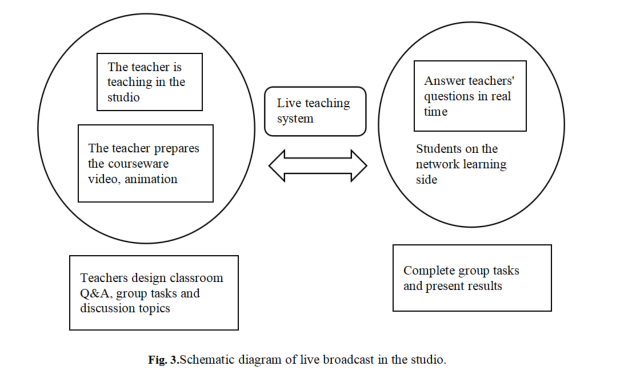
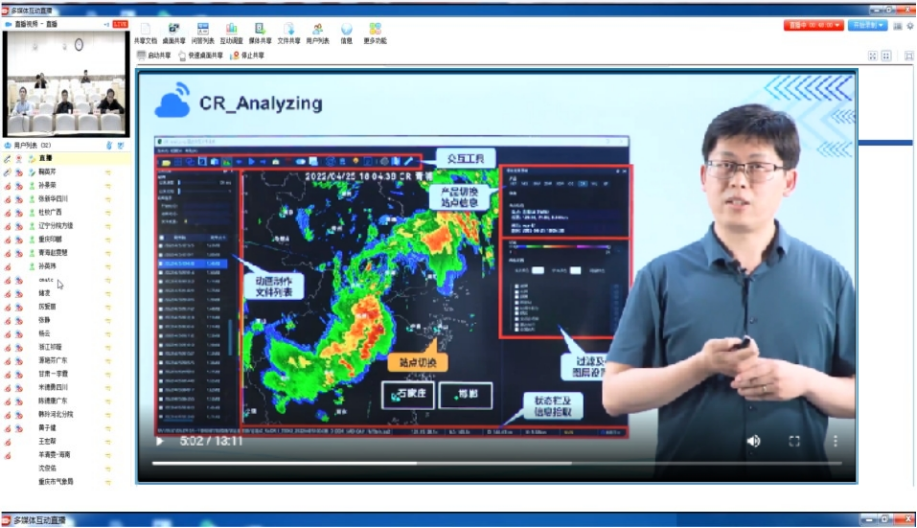
Fig. 4. The platform Screen capture in live broadcast in the studio.
3.3 Mode3:Broadcasting recorded courses in the broadcasting room
In this mode, teachers record teaching resources in advance, such as teaching videos, experimental operation demonstrations, teaching animations, etc., and play them to students in the live broadcast room. This is suitable for teachers to design the teaching process in advance, prepare the experimental and practical training hardware equipment then record field videos in the enterprise practice and practice training base, and make teaching videos for students.
This mode is suitable for operational internships with risks or difficult access to field learning opportunities, for example, automobile aircraft driving operation, radar maintenance, comprehensive observation instrument maintenance and so on. As a part of the classroom, this teaching mode of recorded courses is an observation-driven and process-driven live broadcast mode, which allows students to experience the scene and operation. Although it cannot be visited or operated on the spot, it is more vivid and impressive than the theoretical class.
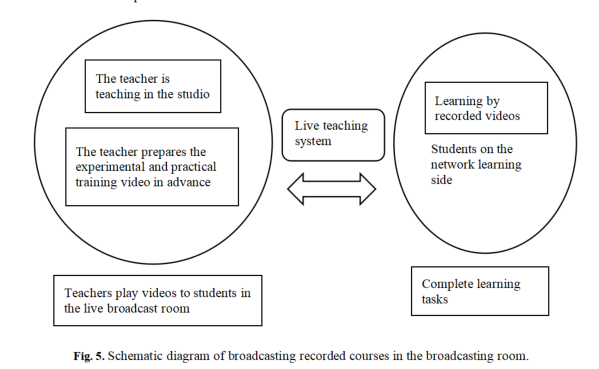

Fig. 6. Broadcasting recorded courses in the broadcasting room.
3.4 Mode4:Practice operation teaching through live broadcast
The live mode of practical training teaching is that teachers use mobile devices such as mobile phones to directly broadcast the operation process in practical training projects. Students can interact with teachers in the broadcast room. If students ask questions, teachers will answer them in real time. It has higher requirements for teachers 'theoretical and practical skills, and needs teachers to fully prepare lessons.
For example, the meteorological department's special training on food security meteorological services adopts the form of online learning of theoretical knowledge, combined with short videos by live broadcast. The live broadcast is to observe how to go into the field to carry out agricultural meteorological observation, agricultural conditions and disaster investigation. The teacher led the students into the experimental field of planting medium rice and late rice in different sowing periods, and gave the students a vivid outdoor practice lesson by live broadcast. Students feedbacked that the live practice course was intuitive, and the knowledge was better applied to business practice.
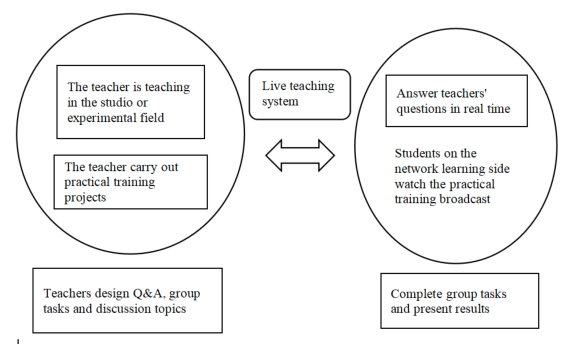
Fig.7.Schematic diagram of practice operation teaching through live broadcast.
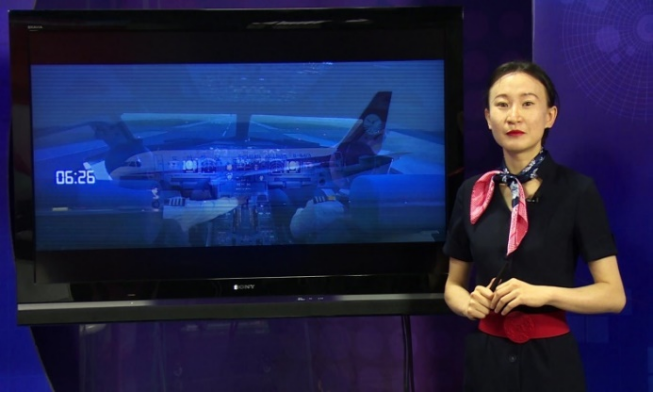
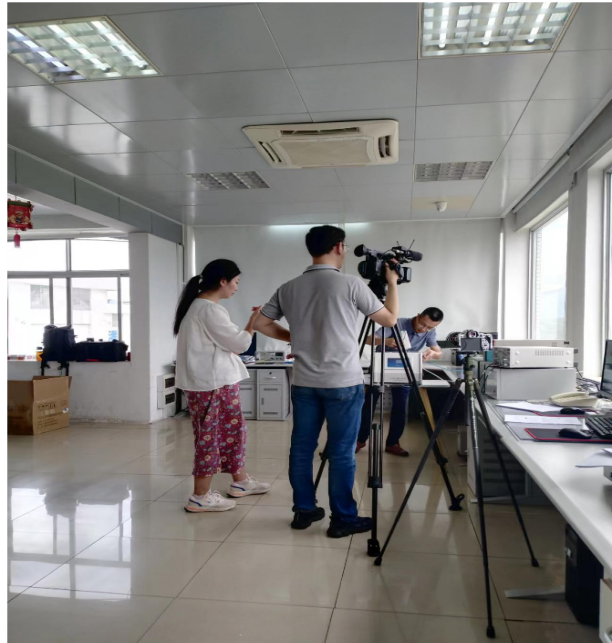
Fig.8. Practice operation teaching through live broadcast.
4 The teaching effect of live teaching mode based on"Internet +"
In the post-epidemic era, with the rapid development of the Internet, online education methods are constantly iterated and upgraded, and "education + live broadcast" has ushered in a wave of upsurge and achieved certain teaching effects. The teaching effect of live teaching mode based on"Internet +" mainly has three aspects.
First of all, live teaching spans space. It can not be restricted by geographical place that means students need not leave home to have classes. Students can use a computer or mobile phone terminal connected to a live broadcast course, truly achieve the teaching of real-time transmission connection.
Secondly, live teaching has good interactivity. Students can learn online and interact with teachers in real time through the live broadcast room, use the interactive function on the live platform to ask questions at any time by text, and you can also raise your hand on the platform waiting for video interaction. It well restore the real teaching scene with supporting attendance, group discussion, in-class test and other interactive functions. Teachers can improve students' learning enthusiasm and learning effect through real-time interaction with students, online Q&A, group discussion. Live broadcast teaching effectively improves the pain points such as low online rate, low completion rate and poor learning effect of online autonomous learning, recorded and broadcast courses and other forms of online education.
Finally, live classes can be quickly recorded and transformed into new teaching resources. The live class platform supports one-click recording, and courseware resources can be uploaded to the learning platform after class. Students who miss the live broadcast can review it, and students can review the recording video at any time after class. It is convenient for students to check and fill the gaps in time, deepen the consolidation and understanding of the key and difficult knowledge points in the classroom, and maximize the value of the recording courses.
In general, the combination of "education + live broadcast" produces the superposition effect of "1+1>2". Online education improves the broadcast rate for live broadcast, and live broadcast makes online education glow with new vitality.
